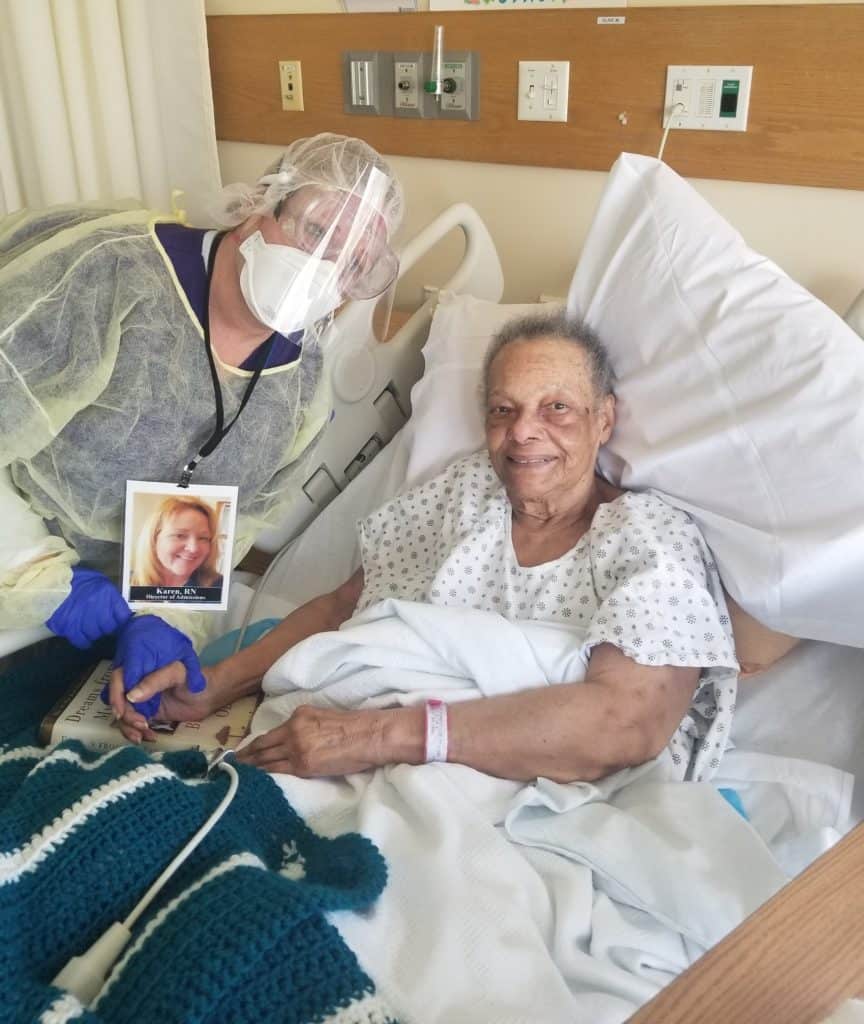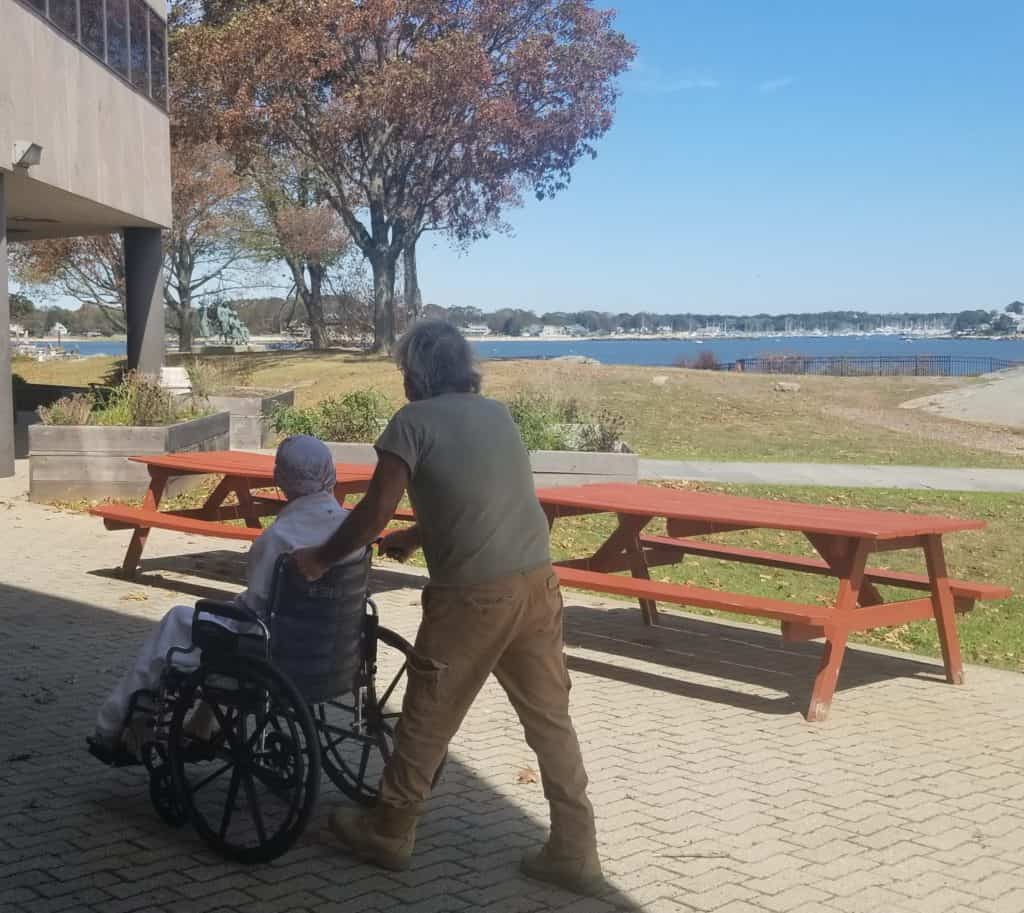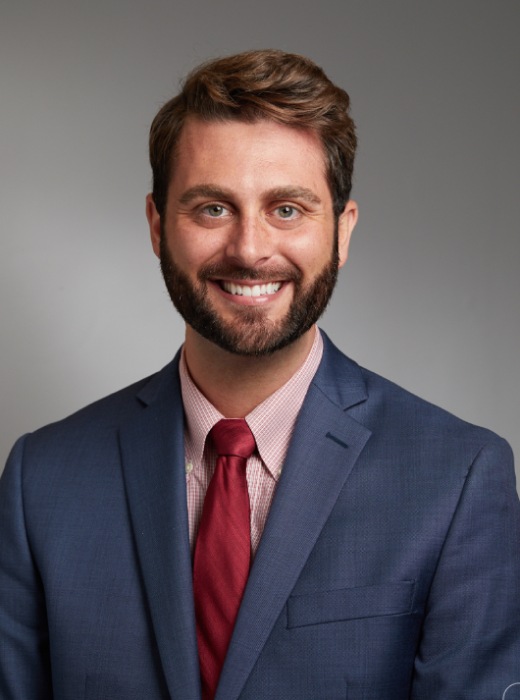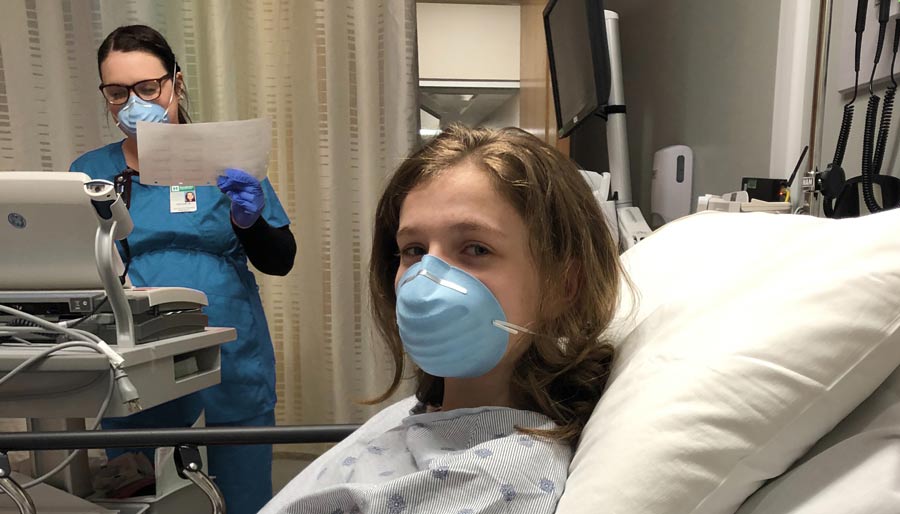Please view our updated COVID-19 guidelines and visiting procedures →.

Caring for patients in a hospice setting is a nurturing and supportive effort that draws on the expertise of professionals engaged in many disciplines, ranging from medical to therapeutic. Indeed, the services offered by a leading hospice, such as The Connecticut Hospice, may in fact be broader and the care offered patients more varied than what is typically pictured by members of the public.
Even so, hospice-service providers remain concerned about the number of persons accessing hospice care late in the course of an illness. That’s per a new report issued by the National Hospice and Palliative Care Organization (NHPCO), which states that “53.8 percent of Medicare beneficiaries received hospice care for 30 days or less in 2018.”
More telling, is that fully a quarter (27.9 percent) of the beneficiaries received care for seven days or less— which NHPCO considers “too short a period for patients to fully benefit from the person-centered care available from hospice [providers].”
“This annual report provides a valuable snapshot of hospice care access and care, and also a reminder that we must continue to strive to make hospice care more equitable and accessible,” said Edo Banach, NHPCO president and CEO, in a statement. “It is also important to remember that behind these numbers are people who rely on person- and family-centered, interdisciplinary care to help them during a time of great need.”
Of compelling interest to hospice patients and their family members and friends are sections within the full 26-page report on what hospice care entails, how and where that care is delivered to patients, and what are the levels of care provided.
“Hospice focuses on caring, not curing,” NHPCO observes. “Considered the model for quality compassionate care for people facing a life-limiting illness, hospice provides expert medical care, pain management, and emotional and spiritual support expressly tailored to the patient’s needs and wishes. Support is provided to the patient’s family as well.”
The report also points out that, in most cases, “care is provided in the patient’s home but may also be provided in freestanding hospice facilities, hospitals, and nursing homes and other long-term care facilities. Hospice services are available to patients with any terminal illness or of any age, religion, or race.”
Indeed, the term “hospice” is somewhat elastic. It describes any approved provider of hospice services, including those that operate free-standing hospice inpatient hospitals and those that bring hospice care directly to patients where they are, be that a long-term care facility or in their own home.
The Connecticut Hospice (also known as CT Hospice) fits both descriptions, as it operates its own hospice hospital in Branford and fields teams of hospice medical professionals and caregivers to provide services at other caregiving facilities where patients are residing or right in the patients’ homes.
When hospice services are provided as in home, a family member typically serves as the primary caregiver and, when appropriate, helps make decisions for the terminally ill individual, notes NHPCO. “Members of the hospice staff make regular visits to assess the patient and provide additional care or other services. Hospice staff is on-call 24 hours a day, seven days a week. The hospice team develops a care plan that meets each patient’s individual needs for pain management and symptom control.”
An interdisciplinary hospice team usually consists of the patient’s personal physician, hospice physician, nurses, hospice aides, social workers, bereavement counselors, clergy or other spiritual counselors, trained volunteers, and speech, physical, and occupational therapists, if needed.
NHPCO lists these as interdisciplinary team services:
Nancy Peer, an Associate Professor for Hospice and Palliative Care at Central Connecticut State University, secured a bed for her son, Brian, who was dying of testicular cancer, so he could live out his last weeks at CT Hospice. “Every nurse that came in was not only compassionate… they would see how our son was doing and then they wanted to know how they could help us,” Peer recently told the Daily Nutmeg of New Haven.
Peer said that during the week Brian spent at the hospice, before dying at age 39 and leaving behind his wife of one year and his parents and a younger brother, friends and extended family were able to visit him and Peer and her daughter-in-law stayed with him. She remarked that the help he and his family received from CT Hospice was “priceless.”
The NHPCO report also details the four Levels of Care (as defined by the Medicare hospice benefit) that hospice patients may require. The levels are distinguished by the intensities of care provided relative to the course of a given patient’s disease.
“While hospice patients may be admitted at any level of care, changes in their status may require a change in their level of care,” NHPCO explains. “The Medicare Hospice Benefit affords patients four levels of care to meet their clinical needs: Routine Home Care, General Inpatient Care, Continuous Home Care, and Inpatient Respite Care.”
The report rightly credits the significant positive impact of hospice-care volunteers. “The U.S. hospice movement was founded by volunteers” and they “continues to play an important and valuable role in hospice care and operations.”
But volunteering is not a simple matter of stepping up to help others. The Connecticut Hospital, for example, requires that prospective volunteers receive a background check before coming onboard and then they are professionally trained by hospice staff to provide care and assistance to patients and their loved ones.
The importance of volunteers is underscored by NHPCO’s observation that “hospice is unique in that it is the only provider with Medicare Conditions of Participation requiring volunteers to provide at least 5% of total patient care hours.”
Volunteers typically provide service to others in these three general areas:

Spending time with patients and families (“direct support”)
Providing clerical and other services that support patient care and clinical services (“clinical support”)
Engaging in activities such as fundraising, outreach and education or serving on a board of directors (“general support”)
For information on volunteer opportunities with The Connecticut Hospice, please go to our website, www.hospice.com, or contact Joan Cullen at [email protected] or 203-315-7510.
The Connecticut Hospice is America's first hospice. It was founded by Florence Wald, and a group of nurses, doctors, and clergy, in 1974 and was the first of its kind in the United States. A few years prior, Wald, then an Associate Professor and Dean of the Mental Health and Psychiatric Nursing Program at Yale University, was inspired by a palliative care lecture given by Dr. Cicely Saunders, the founder of St. Christopher’s Hospice, the first hospice in the world.
Today, CT Hospice’s services encompass both in-home and inpatient care for persons diagnosed with a terminal illness with a limited prognosis, normally of six months or less.
The Connecticut Hospice’s central commitment is to enable the patient to live as fully and completely as possible during the time of their illness. This includes supporting the entire family as the unit of care, rather than just the patient. For example, home-care programs are designed to make it possible for families to keep the patient at home if such care is appropriate, and to marshal community resources to help deepen support and keep care costs as low as possible.

Connecticut Hospice is pleased to join forces once again with Branford Parks and Recreation Department to offer the Hospice Pool Program.
Socially distanced swimming is easy when our pool is Olympic-sized, and numbers are kept low.
Add beautiful views of Long Island Sound and ample free parking, and there's no reason not to join us.
Options include; Open Swim, Aquacise Classes, and Senior Swim.
For eligibility and details, please visit: Branford Parks & Recreation Hospice Pool Program

On June 24, Connecticut Hospice welcomed Dr. Nathan Wood, a Yale Primary Care Internal Medicine Resident, to a 2-week rotation with our Medical Department and the Interdisciplinary Team. Connecticut Hospice’s care-providers are not only proud to share their hospice and palliative care experience with new healthcare practitioners, but also pleased to receive additional knowledge from visiting practitioners.
Dr. Wood has published on a variety of topics, including hands-on curriculum for teaching practical nutrition, code-switching in medical settings, and the effects of fibromyalgia on long-term analgesic outcomes following total knee and hip replacement surgery.
Dr. Wood is also a graduate of the Institute of Culinary Education, where he won the Top Toque Award, presented by faculty for highest academic achievement. In 2017 and 2018 he worked as a Medical Student Producer for the Dr. Oz Show, and won a Production Award from The National Academy of Television Arts and Sciences Daytime Emmy Awards. Obviously a man of many talents, our patients and staff have had the pleasure of hearing him play classical piano in our inpatient lobby when not practicing bedside medicine.
This is the first medical rotation since COVID-19 forced a temporary hold on clinical rotations at Connecticut Hospice. All rotations now include orientation on the correct use of PPE (Personal Protective Equipment) during the coronavirus pandemic.
In July three additional Hospice and Palliative Care Fellows will arrive for orientation prior to each performing a one-month rotation Inpatient and an additional two weeks in Home Care with our teams. We look forward to welcoming Dr. Faisal Radwi, Dr. Alex Choi, and Dr. Bryan Terry.
The John D. Thompson Hospice Institute for Education, Training and Research, Inc. (JDT), the educational ally of Connecticut Hospice, was established in 1979 to provide a vehicle for sharing hospice and palliative care philosophy, experience and skills with students, health care professionals, administrators, caregivers, and the community.
The JDT Hospice Institute offers high-quality continuing education services to physicians and nurses and is accredited to award both CMEs (Continuing Medical Education) and CNEs (Continuing Nursing Education). The Institute is also a premier clinical rotation site and annually host over 300 students from prestigious universities located both in and out of Connecticut and around the world.
To learn more, click here: The John D. Thompson Hospice Institute for Education, Training and Research

For all those isolated by illness and the pandemic, actress and Broadway star, five-time Tony Award nominee Laura Benanti has some joy to share, and we have been asked to help bring it to the Connecticut Hospice community and others who may not be active on social media and might be in need of connection during this time.
Benanti and social activist friend Kate Dieter-Maradei created SunshineConcerts, a free livestream concert series to connect an intergenerational audience.

This spring thousands of high school students across the country were bitterly disappointed to discover the musical productions they had spent months rehearsing would not be staged. On Twitter, Benanti invited students to share videos of the performances they weren’t able to give because of COVID-19.
The #SunshineSongs social media campaign went viral with millions of people joining the virtual audience for students’ heartwarming performances.
Benanti received thousands of videos from all over the country, (her friend Lin-Manuel Miranda watched many with her), and the story was featured on Good Morning America, Vogue, People and the NYTimes, etc,.
Benanti and Dieter-Maradei decided to turn this outpouring of expressions into something positive. The SunshineConcerts project livestreams performances by the best of the student submissions and includes performances by Laura Benanti, and other special guests so that elders and teenagers can come together in music.

Watch the The Sunshine Concert livestream Saturday, May 30 at 6pm! To make the event special, virtual tickets and playbills can be printed.
Download your SUNSHINEBILL Playbook here.
Download your Sunshine Concert ticket here.
Please share these details with anyone you know who is living in isolation during the Coronavirus Pandemic.

Connecticut Hospice would like to THANK everyone who has already donated to help us help others during the COVID 19 Crisis! And while the virus has changed life for everyone, patient care and safety remain the top priorities at Connecticut Hospice. To continue, we must keep our staff safe and healthy as well. This will become even more important as Connecticut Hospice beds will be used to relieve area hospital overflow.
Please help us help others as Connecticut Hospice takes on additional responsibilities to support the New Haven area community by donating today! Your donation will help purchase; masks, gloves, thermometers and scrubs.
As a not-for-profit, we depend on generous donors to help us provide customized services and therapies that aren’t completely covered by Medicaid, Medicare, or private insurance.
Please make a gift to help us sustain the highest standard of care.
Admissions may be scheduled seven days a week.
Call our Centralized Intake Department: (203) 315-7540.